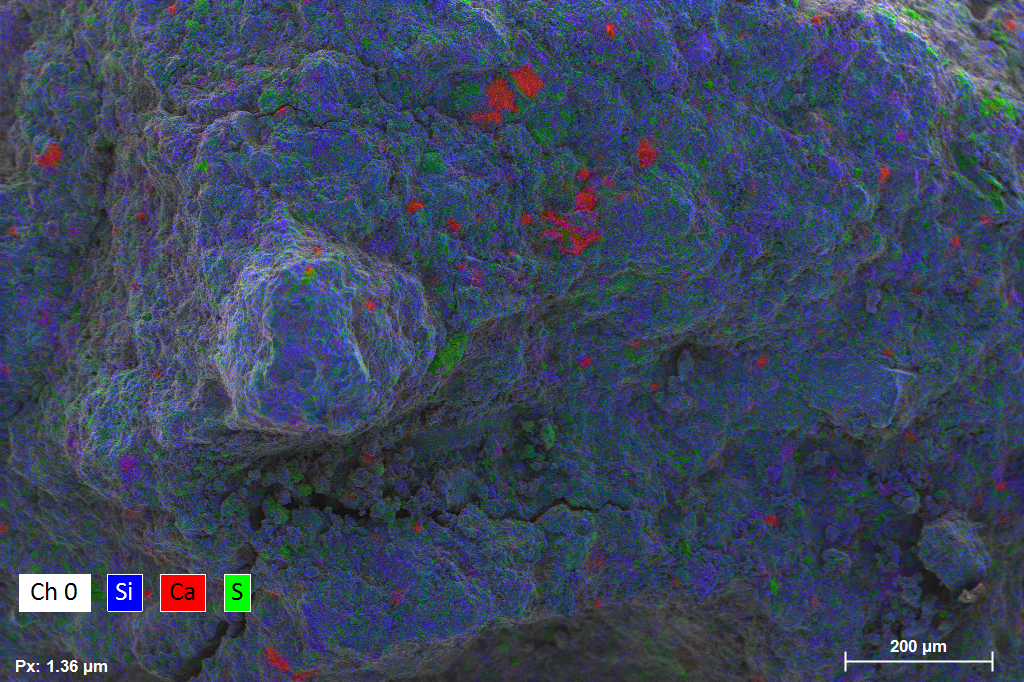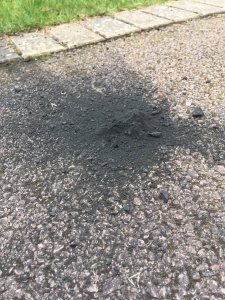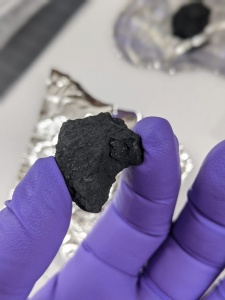The Fall of the Winchcombe Meteorite
Sara Russell (Natural History Museum, London) describes the first UK meteorite fall recovery in thirty years.
Read article in the fully formatted PDF of the Europlanet Magazine.
On the evening of 28th February 2021, a bright fireball blazed across the skies over much of England and Wales. As well as being observed by sharp-eyed members of the public, the meteor was also recorded by camera networks specially set up to capture such events, including the French FRIPON network and a consortium of UK networks coordinated by UKFAll. The members of the camera network teams worked hard over the next few days to calculate that the fireball probably resulted in a meteorite fall in the area around Cheltenham in the west of England.
Colleagues at Curtin University in Western Australia used the data to show that the object originated in the outer asteroid belt, near the orbit of Jupiter.
The morning after the fireball, a family from the Cotswolds town of Winchcombe, near Cheltenham, woke up to find what looked like a pile of barbecue coal on their driveway. Realising that it could only be a meteorite, they carefully collected all the material into clean plastic food bags and got in touch with the Natural History Museum in London. Soon after, Richard Greenwood from the Open University visited the family to verify the meteorite, followed by Ashley King from the Natural History Museum. Immediately, they knew that this remarkable discovery was a carbonaceous chondrite, an exceptionally rare but scientifically valuable type of meteorite.
What followed was surely the most exciting week of my career. I joined many of my colleagues from the museum, and Glasgow, Manchester, Plymouth and Open universities, to trek across the neighbouring fields and talk to the local population about the event.
Several other homeowners found small fragments of the meteorite on their driveways and lawns, and the traipsing across fields proved fruitful when a team led by the University of Glasgow found a relatively large intact stone, over 100g in weight, in a sheep field.
Winchcombe is the first UK meteorite fall to be recovered in thirty years. Before this, the most recent meteorite fall recovery was in 1991, when the Glatton meteorite dropped in the gardens of a Cambridgeshire village. Before then, the last UK falls were back in the 1960s, in Barwell in Leicestershire and Bovedy in Northern Ireland. Winchcombe is also the UK’s first carbonaceous chondrite fall, perhaps the most studied meteorite type by the UK’s meteorite researchers.
All the property owners agreed to donate their treasure to the Natural History Museum, and our preliminary examination of the meteorite has already begun. Oxygen isotopes, a fingerprint for meteorite classification, were acquired within a week of the fall. They confirmed Winchcombe to be a carbonaceous chondrite, specifically of the CM type (a group of carbonaceous chondrites named after the Mighei meteorite found in Ukraine). Using a scanning electron microscope with a variable vacuum environment and low voltage settings we can image and map chips of the meteorite that have not experienced any preparation or coating (see image below), preserving them to be used for more detailed analyses afterwards. We have also devised an analysis plan for the next months, led by Ashley King, to characterise the meteorite’s mineralogy, petrology, physical characteristics (including magnetic properties), organic components, cosmogenic nuclides (rare isotopes created by the bombardment of cosmic rays), and isotope geochemistry.

The Winchcombe meteorite fall is particularly timely because it looks somewhat similar to the material returned in December 2020 by the JAXA Hayabusa2 space mission to asteroid Ryugu, and can potentially be used in analysis rehearsals for the mission material.
The fall of a meteorite such as Winchcombe is not only an important scientific event but also a planetary incident on a very human scale. It is an exceptional opportunity to engage the public in planetary sciences. We have talked to local school children about the meteorite by Zoom and a piece of the meteorite has now been put on display in the Natural History Museum in London. The local museum in Winchcombe is also acquiring some of the rock and planning to exhibit it for residents and tourists to learn about this event and its significance.
The Winchcombe meteorite fall is a wonderful asset for the UK and European science, and it has been a great example of collaboration, community spirit and teamwork that has led to the acquisition and characterisation of this exceptional object. Both the science community and the public have been excited about the meteorite story. It will be studied for many years to come and we welcome the Europlanet community in helping us to share its story.




